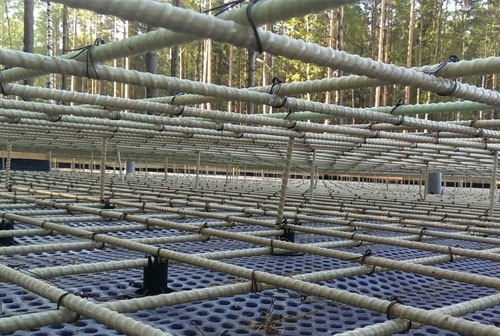In the realm of construction and infrastructure, the choice of reinforcement material plays a crucial role in ensuring structural integrity and longevity. Glass Fiber Reinforced Plastic (GFRP) bars, also known as fiberglass rebar, have emerged as a promising alternative to traditional steel rebar due to their corrosion resistance, lightweight properties, and electrical insulation. However, it is essential to recognize the potential disadvantages of GFRP bars before making informed decisions about their use in construction projects.
Understanding the Disadvantages of GFRP Bars:
While GFRP bars offer several advantages, they also come with certain limitations that should be carefully considered:
Lower Tensile Strength: Compared to steel rebar, GFRP bars have lower tensile strength, meaning they can withstand less tension or pulling force before breaking. This may require using more GFRP bars to achieve the same level of reinforcement as steel rebar.
Brittle Behavior: GFRP bars exhibit brittle behavior, meaning they tend to snap or fracture suddenly under stress rather than bending like steel rebar. This can be a concern in applications where ductility and resilience are critical.
Higher Initial Cost: The initial cost of GFRP bars may be higher than steel rebar, especially for large-scale projects. However, the long-term cost savings due to corrosion resistance and lower maintenance may offset the initial investment.
Susceptibility to UV Radiation: Prolonged exposure to ultraviolet (UV) radiation can degrade the resin matrix of GFRP bars, reducing their strength and durability. This necessitates proper protection or indoor use.
Limited Fire Resistance: While some GFRP bars have fire-retardant properties, they may not offer the same level of fire resistance as steel rebar. This should be considered in applications with high fire safety requirements.
Applications of GFRP Bars:
Despite their drawbacks, GFRP bars offer distinct advantages that make them suitable for specific applications:
Corrosion-Prone Environments: In environments where steel rebar is susceptible to corrosion, such as marine structures, wastewater treatment plants, and chemical processing facilities, GFRP bars provide a durable and corrosion-resistant alternative.
Lightweight Structures: In applications where weight reduction is crucial, such as bridge decks, elevated slabs, and seismic retrofits, GFRP bars' lightweight nature can significantly reduce the overall weight of the structure.
Electrical Insulation: In electrically sensitive environments, such as power stations, MRI facilities, and telecommunication structures, GFRP bars' electrical insulation properties eliminate the risk of electrical shorts and stray currents.
Non-Magnetic Applications: In situations where magnetic fields can interfere with sensitive equipment, such as medical devices or electronic components, GFRP bars' non-magnetic nature is a valuable asset.
FRP Rebar vs Steel Rebar: A Comparative Analysis:
| Property | GFRP Bars | Steel Rebar |
| Tensile Strength | Lower | Higher |
| Ductility | Brittle | Ductile |
| Initial Cost | Higher | Lower |
| Corrosion Resistance | Excellent | Poor |
| Electrical Conductivity | Non-conductive | Conductive |
| Fire Resistance | Limited | Higher |
| Weight | Lighter | Heavier |
Conclusion:
GFRP bars offer a compelling alternative to traditional steel rebar in specific applications where their unique properties, such as corrosion resistance, lightweight nature, and electrical insulation, are crucial. However, it is essential to carefully consider their potential drawbacks, including lower tensile strength, brittle behavior, and higher initial cost, when making informed material selection decisions. By understanding the strengths and limitations of GFRP bars, construction professionals can optimize their use in projects, ensuring structural integrity, longevity, and cost-effectiveness.
 +86 15303735673
+86 15303735673 Jessica@frpzs.com
Jessica@frpzs.com
 Technical Data
Technical Data












